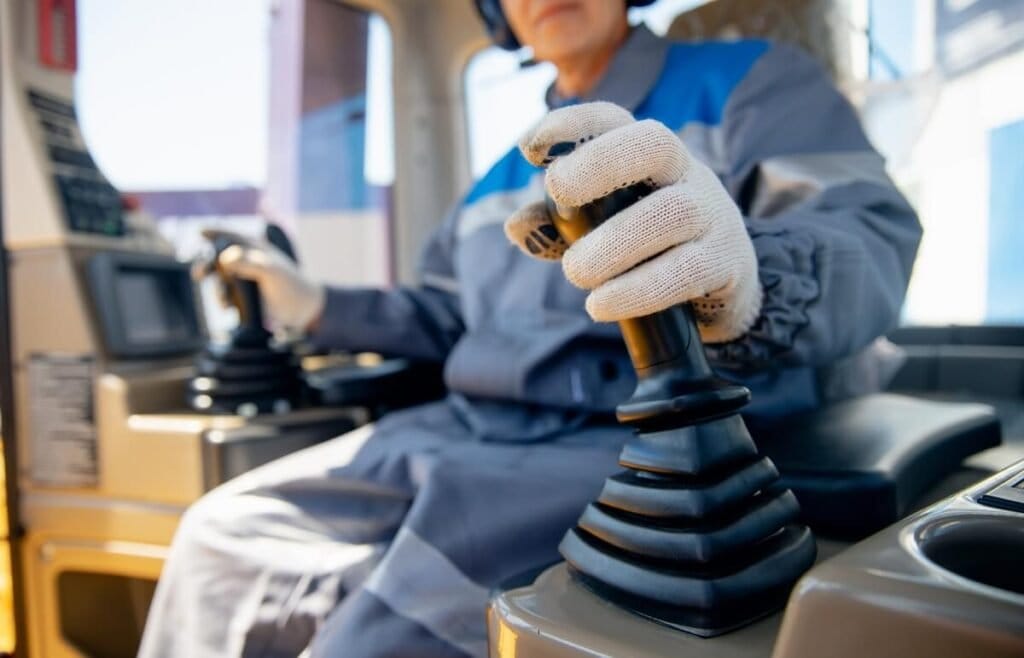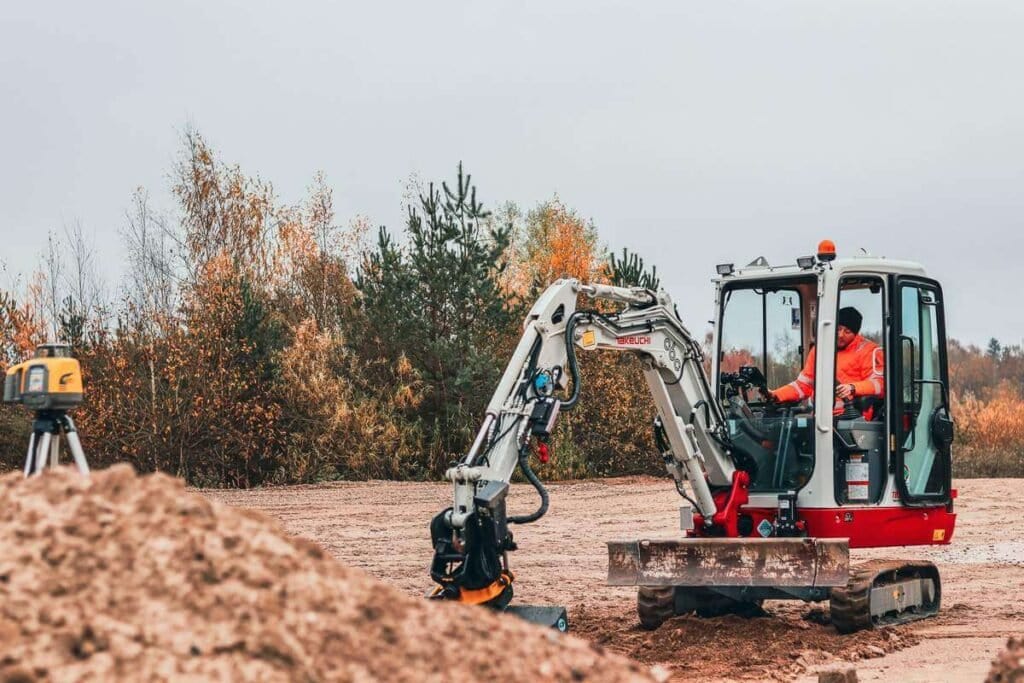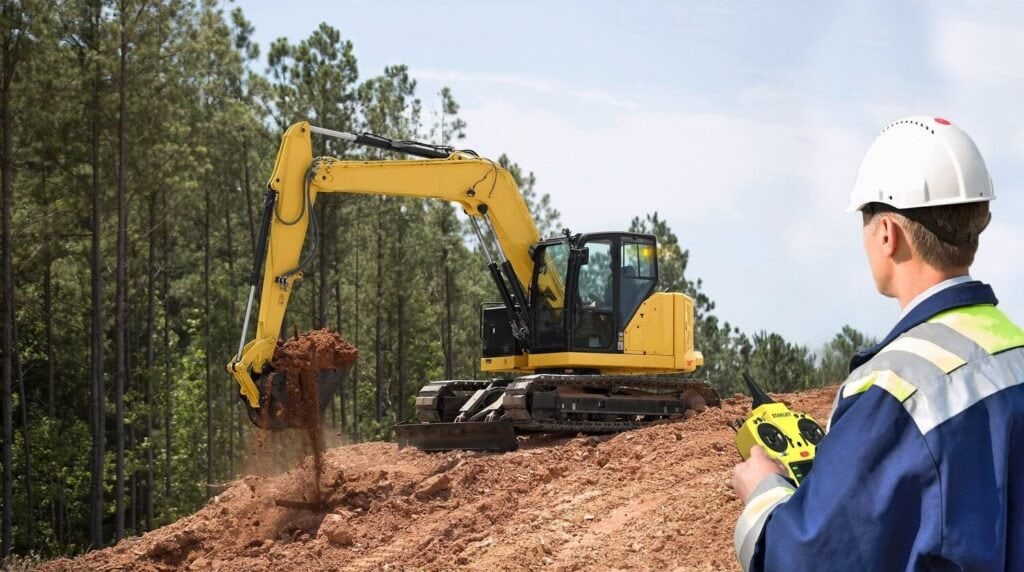1. Introduction
Excavator control systems might seem complex, especially if you’re new to heavy machinery or want to upgrade your equipment. Whether you’re operating a mini excavator or a large hydraulic excavator, the control systems play a critical role in determining how smoothly and efficiently you can perform tasks like digging, lifting, and grading.
However, poor control systems or incorrect usage of controls can lead to inefficient operations, increased fuel consumption, and even safety hazards. Moreover, the diversity of control systems across various brands and models can make it confusing to choose the right machine or understand how to maximize its potential. Without mastering the excavator controls, even the most experienced operator might struggle to get the desired performance out of their machine.
Understanding how excavator control systems work, including the different types of controls and how to use them effectively, can help you optimize the performance of your machine, improve safety, and reduce downtime. In this article, we will break down the essentials of excavator controls, their types, and how you can leverage them for greater productivity.

2. Excavator Control Systems Overview
The control system of an excavator consists of mechanisms that allow the operator to control various movements of the machine, including the boom, arm, bucket, and attachments. A robust control system ensures the operator can perform tasks with precision and efficiency, from heavy lifting to delicate digging.
Key Components of Excavator Control Systems:
- Hydraulic Control Systems: These are the most common control systems in excavators today. The hydraulic system uses pressurized fluid to move cylinders, which control the machine’s arm, boom, bucket, and attachments. Hydraulic systems are known for their power, precision, and smoothness in movement.
- Electronic Control Systems: These systems integrate digital technologies into the hydraulic and mechanical control components, improving responsiveness, optimizing fuel efficiency, and allowing real-time adjustments based on sensor feedback.
- Mechanical Controls: Older or more basic models of excavators may still use mechanical linkages, levers, and cables to control movements. These systems are simpler but less efficient and precise compared to hydraulic or electronic systems.
- Joysticks and Foot Pedals: Many modern excavators use joystick control systems, where the operator can manipulate the joysticks to move the machine and operate attachments. Foot pedals are sometimes used for throttle control and specific functions, especially in older models.
How Control Systems Impact Performance:
The type and quality of an excavator’s control system directly influence its operational efficiency. A modern hydraulic or electronic control system allows for smoother, more responsive movements, improving task efficiency and reducing the risk of mistakes. Conversely, outdated mechanical systems might require more manual effort, resulting in slower operation and less precision.

3. Types of Excavator Control Systems
Excavator controls can vary widely depending on the type and model of the machine. Here are the most common control systems found on modern excavators:
1. Mechanical Control Systems
·Overview: Mechanical control systems use cables, levers, and linkages to transmit the operator’s movements into mechanical action. These systems are typically found on older or more basic models..
·Pros: Simplicity, low maintenance, and ease of repair. These systems are typically less expensive and can be operated with minimal electrical components.
·Cons: Less precise than hydraulic or electronic systems, making them inefficient for fine operations. They may also require more physical effort from the operator, leading to fatigue during long shifts.
2. Hydraulic Control Systems
·Overview: Most modern excavators use hydraulic systems to move the machine. Instead of using cables, levers, and linkages like mechanical systems, hydraulic systems use fluid pressure to power cylinders to control the movement of the excavator’s arm, boom, bucket, and other attachments. The reason your rig has a hydraulic system is that hydraulic systems provide superior precision, smoothness, and the ability to manage heavier tasks.
·Pros: Exceptional lifting power, smooth operation, and highly responsive control for a variety of tasks. These systems are particularly suited for tasks requiring high precision, such as trenching and lifting heavy materials.
·Cons: More complex and requires regular maintenance, including fluid checks and potential repairs to seals and valves.
3. Electronic Control Systems (ECS)
·Overview: ECS integrates digital sensors, valves, and feedback loops to improve the control and performance of the excavator. These systems monitor various aspects of the machine’s operation in real time and make automatic adjustments to optimize performance.
·Pros: Increased precision, fuel efficiency, and advanced performance features. ECS can also reduce operator fatigue by automating certain aspects of control.
·Cons: More expensive and may require specialized knowledge for troubleshooting or repairs.
4. Joystick Control Systems
·Overview: Joystick control systems have become the standard for most modern excavators. These systems use dual joysticks, typically controlling the boom and arm with one and the bucket and attachment with another.
·Pros: Very intuitive, easy to use, and widely adopted in the industry. Joystick controls offer high precision and responsiveness, which is essential for delicate tasks like fine grading and lifting.
·Cons: More susceptible to electrical issues and malfunctions than mechanical systems, especially in harsher work environments.
5. Pilot Control Systems
·Overview: Pilot controls use electronic signals to operate hydraulic valves, instead of the physical linkages found in mechanical systems. These systems offer smooth, high-precision control, reducing operator effort and increasing efficiency.
·Pros: High precision, reduced fatigue for the operator, and smooth movements for delicate operations. Pilot controls are highly adaptable and can be used in a variety of excavator applications.
·Cons: More complex and can be more expensive to maintain due to the reliance on electronic components and sensors.

4. How Excavator Control Systems Affect Operator Performance
Operating an excavator can be a daunting task, especially for new or less experienced operators. The complexity of modern excavators, which can include multiple control systems, is often a source of frustration. From the movement of the boom to the bucket, every aspect of an excavator’s function is controlled by a system that demands precision. When the control system isn’t intuitive or efficient, operator performance can suffer. This results in slower job completion, greater risk of accidents, and a potential increase in maintenance costs.
Poor control systems can severely hinder productivity. Operators may struggle with muscle fatigue from heavy or poorly designed controls, resulting in mistakes or reduced operational efficiency. Furthermore, a lack of fluid coordination between different control levers can lead to imprecise movements, causing longer excavation times or even damage to the machine or the surrounding area. When you don’t get the best from your equipment, both the worksite and your bottom line can suffer.
Understanding how excavator control systems affect operator performance is crucial for improving productivity and safety. By leveraging intuitive control designs, advanced hydraulic systems, and electronic control features, operators can execute tasks with greater precision, reducing errors, enhancing productivity, and improving overall safety. In this article, we will explore the different types of excavator control systems, how they impact operator performance, and tips on getting the best out of your equipment.
4.1. The Basics of Excavator Control Systems
To understand how control systems influence operator performance, it’s essential to first examine the types of control systems commonly used in modern excavators. Excavator control systems determine how an operator interacts with the machine and how smoothly and efficiently the machine operates during various tasks.
Key Control Systems:
Mechanical Control Systems: In older models, mechanical controls are often employed, using levers and cables to control movements. These systems are reliable but require more physical effort and precision from the operator.
Hydraulic Control Systems: Hydraulic systems use fluid pressure to operate the machine’s various functions. These systems allow for smooth, powerful movements but can be sensitive to improper maintenance.
Electronic Control Systems (ECS): The most modern control systems, which integrate digital technology to control hydraulic functions. These systems provide more responsive control, adjusting in real time to workload demands.
Joystick Excavator Control Systems: Joysticks have become the standard in many modern excavators, offering precise control with minimal effort. Dual joysticks typically control the boom and bucket, making complex tasks easier to perform.

4.2. How Excavator Control Systems Impact Operator Performance
The control system you use has a significant influence on how well you can perform as an excavator operator. Here are some key ways that control systems affect performance:
4.2.1. Precision and Accuracy
The type of control system directly affects the precision with which operators can control the machine. More advanced systems, like hydraulic and joystick controls, offer fine-tuned adjustments, allowing operators to complete tasks with greater accuracy. This is especially important for delicate tasks like grading, digging near structures, or handling fragile materials.
Hydraulic Systems: Provide consistent power and control for precise movements, crucial for deep digging, trenching, and lifting tasks.
Joystick Excavator Controls: Allow for smooth, incremental adjustments, enabling precise movements, which reduces the likelihood of errors or accidents.
4.2.2. Speed of Operation
The speed at which an operator can perform tasks is influenced by the responsiveness and ease of use of the control system. Modern excavators equipped with advanced hydraulic and electronic control systems are much faster to operate compared to older mechanical systems. These systems automate certain movements, making it easier for operators to adjust quickly to shifting demands.
- Electronic Control Systems (ECS): These systems allow for faster adaptation to workload demands. For example, adjusting the speed and pressure of the hydraulic system in real time can help operators finish tasks in a fraction of the time it would take using older control systems.
4.2.3. Operator Fatigue
Operating an excavator can be physically demanding, especially when the control system requires constant, forceful inputs. Mechanical systems, in particular, can be tiring to use for extended periods, as they demand more physical effort from the operator. This can lead to fatigue, reducing productivity and increasing the risk of mistakes.
Joystick Systems: Modern excavators equipped with joystick controls require less physical effort from operators, allowing them to work longer without becoming fatigued.
Hydraulic and Electronic Excavator Controls: These systems minimize the strain on operators, allowing them to focus more on tasks without being distracted by the complexity of the controls.
4.2.4. Safety and Error Reduction
A critical factor in operator performance is safety. Complex or unintuitive control systems increase the chances of operator error, potentially leading to accidents on the job site. Advanced control systems, such as pilot or joystick controls, are designed with fail-safes and user-friendly features that make operation smoother and more predictable.
Pilot Excavator Controls and Joysticks: These systems are designed to reduce the margin for error, as their precision allows operators to make minor adjustments to movements, reducing the risk of unintended damage to equipment or surroundings.
Safety Features in Modern Systems: Many modern excavators come with safety features integrated into the control system, such as automatic cutoff systems or overload alerts, helping the operator avoid dangerous situations.
4.2.5. Ease of Learning
Learning to operate an excavator can be a time-consuming process, particularly when the control system is complicated. Older mechanical systems require operators to learn how to coordinate several different levers and switches. In contrast, modern systems like joysticks or electronic controls tend to be much easier to learn, offering more intuitive interfaces.
- Joystick and Electronic Excavator Control Systems: These systems are more intuitive, making it easier for new operators to learn how to use the machine and get up to speed quickly.

4.3. The Impact of Excavator Control Systems on Machine Versatility
Excavators are versatile machines that can be used for a wide range of tasks, from digging and lifting to grading and demolition. The type of control system installed on the excavator can determine how well the machine performs in different settings.
Hydraulic Control Systems:
These systems are ideal for jobs that require high power and stability, such as heavy lifting or digging. Hydraulic systems allow operators to adjust the power delivered to the boom, arm, and bucket, providing flexibility for various tasks.
Joystick Controls:
Joysticks are especially effective when tasks require high precision and flexibility. They allow operators to execute complex tasks, like grading or placing materials, with ease. This makes joystick-controlled excavators ideal for landscaping, infrastructure projects, and urban excavation.
Pilot Controls:
Pilot control systems can adjust in real time to match the task at hand. Whether performing delicate digging or lifting heavy loads, pilot controls ensure operators have precise control over every aspect of the machine’s movement.

4.4. How to Optimize Excavator Control Systems for Better Performance
To get the best out of your excavator control system and boost operator performance, here are some helpful tips:
Regular Maintenance: Ensure your hydraulic and electronic systems are regularly checked for fluid levels, leaks, and calibration issues. A well-maintained system operates more efficiently, leading to smoother and more responsive control.
Operator Training: Proper training can make a huge difference in performance. Make sure operators are familiar with the control systems and understand how to adjust them for different tasks.
Ergonomic Adjustments: Ensure that the seating and controls are adjusted for maximum comfort. Reducing strain on the operator can help improve focus, reduce fatigue, and lead to better overall performance.

5. Excavator Control System Maintenance and Troubleshooting
Excavator control systems, like all mechanical and hydraulic components, require regular maintenance to function optimally. Here are some tips for maintaining your excavator’s control systems:
Routine Checks and Maintenance
- Hydraulic Fluid Levels: Low hydraulic fluid can cause sluggish or unresponsive control movements. Regularly checking fluid levels and replacing the fluid as needed ensures smooth operation and prevents premature wear on hydraulic components.
- Sensor Calibration: Electronic systems often rely on sensors to provide real-time feedback. If you notice any inconsistencies in the control system’s response, the sensors may need recalibration or replacement.
- Component Inspection: Inspecting key components like joysticks, valves, linkages, and hoses is essential for identifying signs of wear or damage before they cause malfunctions. Ensure all parts are properly lubricated to prevent friction-related issues.
Troubleshooting Common Control Problems
- Unresponsive Controls: If the controls become sluggish or unresponsive, it could indicate an issue with the hydraulic fluid, a malfunctioning control valve, or a problem with the electronics in digital control systems.
- Jerky Movements: Jerky or uneven movements typically point to issues with the hydraulic system, such as air in the lines or a clogged valve. Addressing these issues promptly can prevent further damage to the system.
- Poor Precision: If the excavator lacks fine control or is unsteady during delicate operations, check for calibration issues or wear in the control linkages or joystick systems.

6. Заключение
Excavator control systems are essential to the efficient operation of the machine. Understanding how each system works, and how to maintain it, is crucial for both operator performance and machine longevity. Whether you’re operating a simple mechanical system or a sophisticated electronic control system, mastering your excavator’s control can significantly improve your productivity and ensure safer, more efficient operations.
At ХИОСЕН, we offer a variety of excavators equipped with the latest control systems. Свяжитесь с нами сегодня for more information about our excavator range and how we can help you find the perfect machine for your needs! We deal in Carterpillar, Komatsu, Hyundai, Hitachi, Volvo, Sany, Kubota, and many other brands, contact us to get more details.